Bird Photography, Art and Games Appreciation, Comforting Post Refuge
Don't wanna be here? Send us removal request.
Text
I've been away for a bit! Turns out that it's harder to find time to take photos of birds, much less blog about it, when you have a second tiny child to care for. My baby was born in May, essentially right in the middle of peak migration for Wisconsin, so I've spent far less time gently cradling a camera this year and much more time with a wiggly kid slung over my shoulder. However, my partner is kind enough to carve out the odd hour for me to sit by myself and look up.
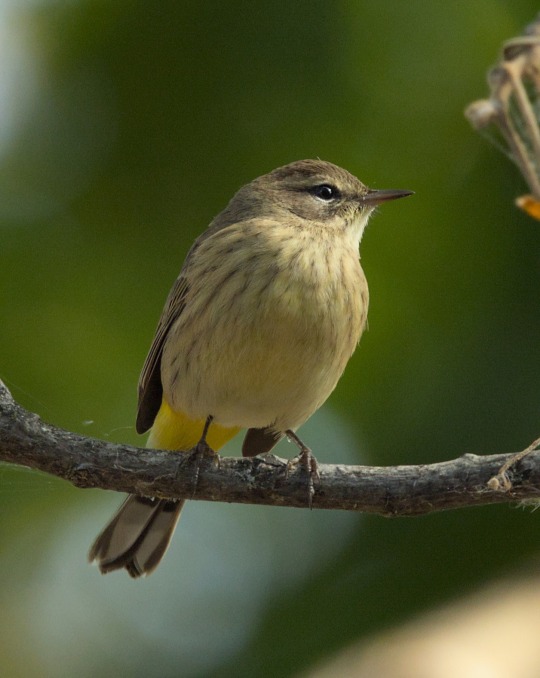
[ID: A Palm Warbler sits on a branch, wings folded, looking toward the sunlight. The bird is just a couple inches tall, and is sporting the mostly pale plumage that is typical of Warblers in the fall. Head in profile, the bird looks out with a dark brown eye from gray head feathers with a somewhat darker gray cap and eye stripe. The breast is a lightly streaked pale yellow, and only the under-tail coverts show a brighter yellow that would be expected of this species in spring. End ID]
I found this individual taking a small break in one of the trees in my backyard. Normally, Warblers like this one are constantly in motion, darting around in search of food to fuel their long southerly migration. But this one must have had their fill for the time being, content to sit still and take in the sights of our little patch in Madison. It was early afternoon, and the light was sifting beautifully through the leaves of the trees. I can understand why they would choose this place to rest for a moment.

[ID: The same Palm Warbler sits on a smaller branch, this time presenting their right flank to the camera. Their wings are showing the same light shade of gray as their head. From this angle, it's apparent how fluffed the little bird is, insulating themselves against the slight chill in the air. End ID]
I knew right away that this was a Palm Warbler from the way they pumped their tail up and down, up and down. Even when they were otherwise still, that tail was still going at times. What were they thinking about on this brief stop, looking south toward the lake and beyond to their destination? Did they have any children this spring? Would they take them to Cuba? Puerto Rico? Surely someone has to show the young ones the way to their winter home...
#bird#bird photography#birding#photography#birds#original photography on tumblr#birdblr#warbler#palm warbler#why yes i am having profound feelings about my own growing family why do you ask#birdwatching#migration#fall#autumn
55 notes
·
View notes
Text
I logged my 200th bird species for Wisconsin! I got a great tip from a close friend, who knows about these things, that a Hooded Warbler had appeared in a park near my house.
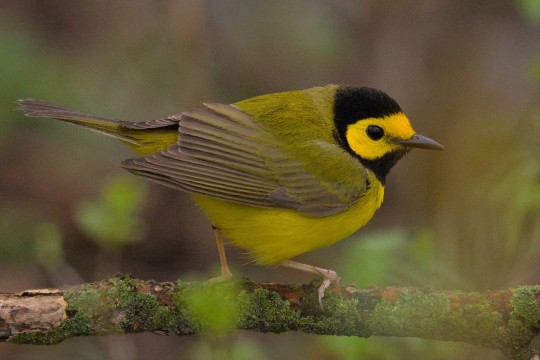
[ID: A male Hooded Warbler perches on a mossy branch in the forest. His body is just a couple inches long, with green feathers on back, wings, and tail, and dull yellow for the underparts. His "hood" is a black cowl that covers almost his entire head save for a bright yellow mask that extends in an oval from the middle of his face to surround the eye and ear on each side. He has a pointy dark gray bill shaped for picking insects off of trees, and his eye is a reflective jet black that stands out against the yellow mask. End ID]
The next morning, I packed up my camera along with my work bag and took a break from my commute to check out the park. I arrived to find several people wandering the trails, here to do the exact same thing as me. None of them had seen the Hoodie yet, but they had a wealth of information from other birders on the movements and general behavior of the bird from the past couple days. I spent at least 45 minutes wandering the trails, squishing through the damp and the mud in my work slacks and sneakers. I logged five firsts for 2024, but no sign of the elusive Hooded Warbler.
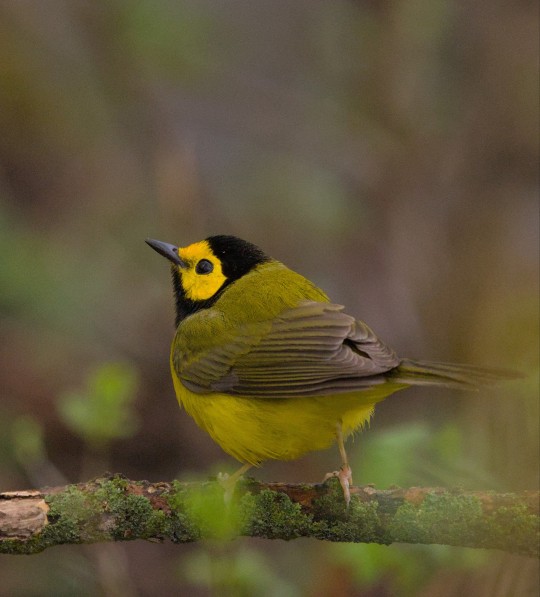
[ID: The Hooded Warbler perches on the same mossy branch, this time facing away from the camera and looking up into the treetops. His wings are neatly folded behind his back, making a pleasing pattern with the tips of the primary flight feathers. End ID]
So I left the park for work, but decided I should come back in the evening. I knew from the sighting reports in eBird that this guy is active all day. When I got back to the park, it was cloudy and drizzling. I met a pair of nice young women with binoculars and a camera lens as long as mine. I asked, "Are you here looking for the Hooded Warbler too?"
One of them said very casually, "Oh yeah, it's right over there across the creek. Just flittering around." So of course I had to get eyes on him and try to get a photo. It was only a couple minutes before he came out again and started working the far bank of the creek.
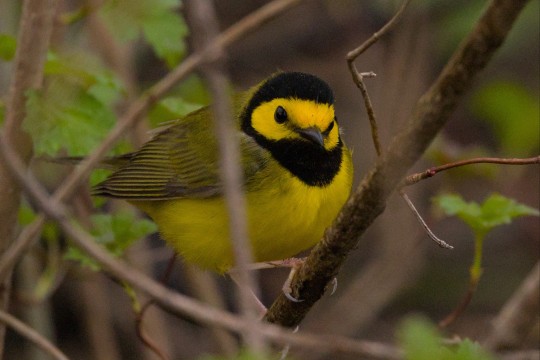
[ID: The same Hooded Warbler, this time perched deeper in the brush and looking toward the camera. This angle provides a better view of the black hood and bright yellow mask, looking delicately fringed around the edges. End ID]
I probably followed the Hoodie down the creek for like 10 minutes before he decided to cross over to our side to do some more foraging. I froze. He was almost completely hidden in the brush, but I could see bits of movement and kept him in the frame the whole time. I knew I couldn't make any sudden moves without scaring him away. For a brief moment, he came out to take a closer look at me, which is where all the photos in this post came from. I only managed to shoot three bursts while he was completely out in the open before he took off for the far side of the creek again.

[ID: The Hooded Warbler looks directly at the camera, only partially obscured by a twig. His posture suggests being ready to leap forward and continue the hunt for insects. End ID]
I was left feeling incredibly amped. The other photographer and I had to share back-of-the-camera shots and gush over how cute he was and how close he came to us. It seems it's always a special event when a rare or unusual species shows up in town. I love these brief moments of connection with birds and the people that care about them.
#bird photography#birding#photography#birds#bird#birdblr#birdlife#birdwatching#original photography#original photography on tumblr#warbler#hooded warbler#close encounter#migration#spring
122 notes
·
View notes
Text
Last weekend I was planning to drive out to the west side to pick up a load of birdseed. My coworker had told me that he was out at Tiedeman's Pond the other day, and I said to myself, "I bet there's ducks on that pond. I better go check." So I grabbed my camera bag on the way out the door. And folks? There were ducks.

[ID: A male Wood Duck swims on a pond of rippling blue water from left to right. The duck is presenting his entire profile to the camera, from glossy green head to dark tail tip. He has a brown body, more burgundy at the breast, with finely scaled tan and gray flanks and just a hint of teal peeking through on the wing. Each color patch is bordered with a brilliant white stripe, including a lovely pattern on the face and head. His head feathers are swept back in a longish crest that looks black except for the iridescent green where the sun has caught it. This contrasts with a striking bill in orange gradients with a white patch on top and black tip. His eye is a bold fire engine red. End ID]
I was surprised to find multiple pairs of Wood Ducks very close to the edge of the pond, because these guys will usually fly at the first sign of a human in the area. I can only assume they were desensitized by the frequent groups of walkers out with their kids and their dogs.
There were lots of other ducks to be seen: Lesser Scaups, Hooded Mergansers, Buffleheads, Ruddy Ducks, Mallards. But most of these were way out at the center of the pond and not interested in being photographed. The only exception being a small group of Ring-necked Ducks that were diving for food near the cattails.
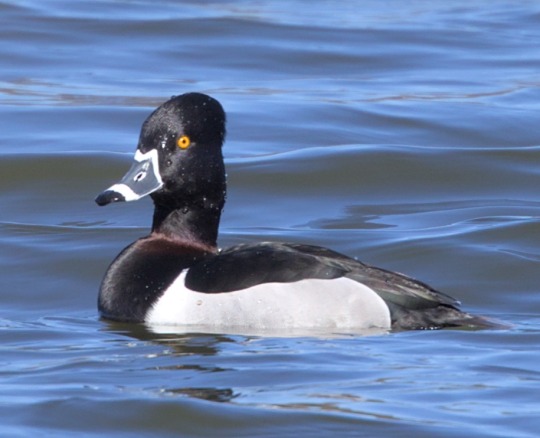
[ID: A male Ring-necked Duck swims from right to left on the pond. It is glossy black, with light gray flanks fading to white towards the front. His bill is medium gray in the middle, black on the tip, with a bright white border around the edges, circling the nostrils, and separating gray from black. His eye is yellow orange. His feathers are beaded with water droplets from diving for food. End ID]
But it wasn't just ducks on offer that day! Spring means birds migrating back from the south and hungry from the long flight. I got to watch a pair of Great Blue Herons show up and immediately begin hunting.
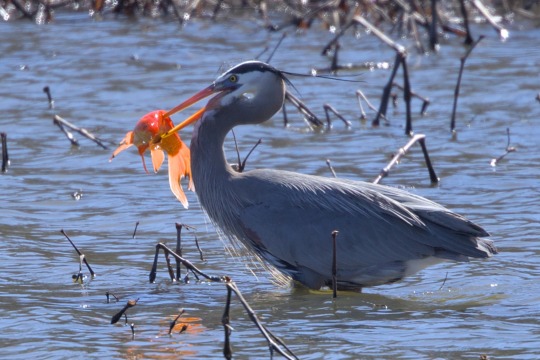
[ID: A Great Blue Heron is standing in a pond, with a freshly-caught goldfish in its bill. The Heron is standing with its legs completely submerged in the water, with its long neck coiled back as it pulls up the large goldfish. The Heron is several feet tall, mostly gray, with white on their head and a dark blue cap with long trailing feathers at the back. The goldfish is at least eight inches long, and the Heron appears to have speared it on their long upper mandible, which glows orange from the bright sunlight filtering through from behind. End ID]
I was very happy to see that the Herons were doing their part to control the non-native fish population. This one had speared a very large goldfish, and had to think a minute about how to eat it. They dropped the goldfish back in the water only to recapture it for swallowing head-first. Their partner looked on from a short distance away, not having found anything while I was there.

[ID: A second Great Blue Heron slowly wades by, hunting in the shallow part of the pond. This one shows a flash of dark-blue tail feathers, and the direct sunlight offers a nice view of their bright yellow dagger of a bill and their pale yellow eye rimmed in baby blue skin. End ID]
And it wasn't just water birds that were attracted to the awakening pond. This American Crow flew down to the edge to see what small morsels might be crawling around in the mud.

[ID: An American Crow stands at the edge of the pond. The Crow is facing away from the camera, with the sunlight glinting off their glossy black feathers. They are looking toward the camera in profile, showing one brown eye and a chunky black bill. End ID]
The Black-capped Chickadees were out too. This pair had found a nice little tree cavity, and they may have been excavating it further to use as a nest.

[ID: A Black-capped Chickadee peeks out from a tree hollow, holding a small bit of something in their bill. They are just a couple inches tall, with a gray and tan body, and a predominantly black head. They have white cheeks that start at the small black bill and extend back to the neck. They are staring inquisitively at the camera, with little bits of what looks like wood stuck to their face. End ID]
The two Chickadees seemed to be working in shifts, one keeping watch outside while the other one went in to prep the house. I wonder how many generations of birds have grown up in that little knothole...
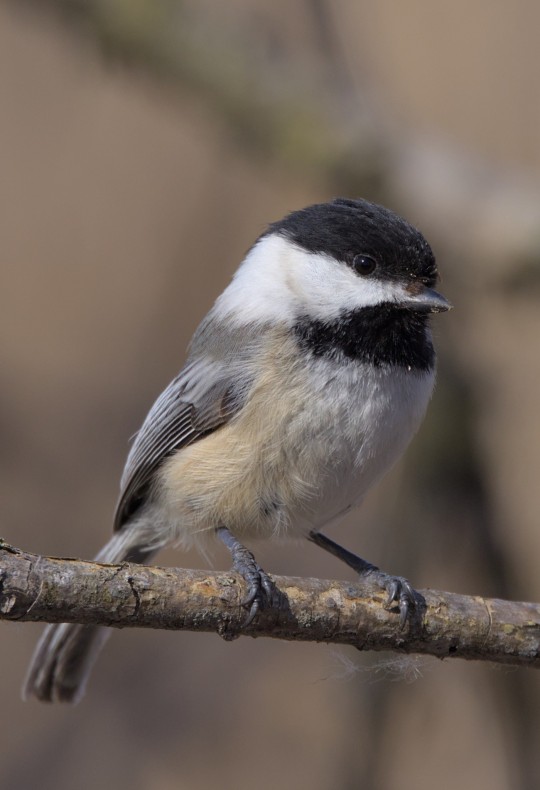
[ID: A second Black-capped Chickadee perches on a thin branch with delicate feet. They are sitting very still, keeping watch while their partner works in a nearby tree cavity. There are a few tiny flecks of what might be wood on their face. End ID]
Though, the bird that gave me the most excitement on this walk was a new one. My partner teases me, saying that I have to check every seagull to see whether they're a Herring or a Ring-billed. But on this day I had found a Bonaparte's Gull!
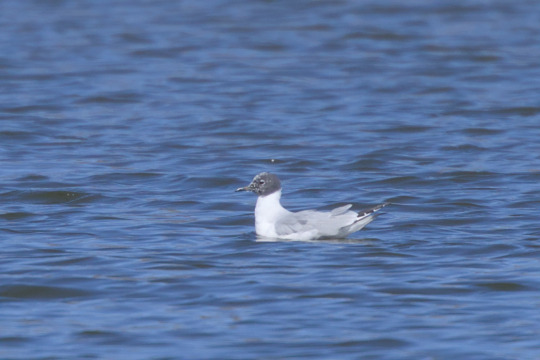
[ID: A Bonaparte's Gull floats out in the middle of the pond. The Gull is white with light gray wings and black wingtips. Their head is mostly gray with patches of white, possibly because they're in the middle of molting to grow their breeding plumage. End ID]
The Gull was hanging out with a nice flock of Lesser Scaups, and I knew I had a lifer in my binoculars as soon as I saw that gray head. Every so often it would take off and fly around the pond, looking for tasty fish to snatch from the surface. They never wandered all that close to me, but I got a few nice shots of those wings.
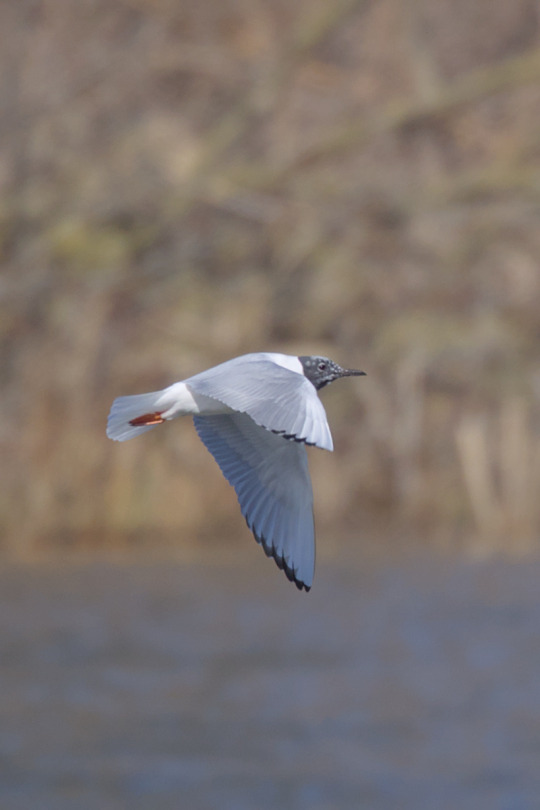
[ID: The Bonaparte's Gull flies low over the pond, on the hunt for small fish. With wings fully extended, it is apparent that the black wingtips are just a thin crescent at the tip of each primary flight feathers. The Gull is in the middle of a down stroke, head forward, orange feet tucked neatly beneath fanned gray tail. End ID]
For only visiting on a whim, this was a very productive walk. I saw 35 bird species, seven for the first time this year, and one for the first time ever. I suppose that's why birders wait all year for spring migration to start.
#bird#bird photography#birding#photography#birds#birdblr#birdlife#birdwatching#original photography#original photography on tumblr#duck#heron#gull#wood duck#ring-necked duck#great blue heron#american crow#black capped chickadee#bonaparte's gull#lifer
29 notes
·
View notes
Text
Folks, I have tracked down another Owl!

[ID: A Short-eared Owl sits on top of a wooden post at dusk. They stand about a foot tall, with rounded body and head, oval face, and no visible ear tufts. Their feathers are a lovely pattern of brown, tan, and cream, with white and tan face feathers radiating from a hooked black beak. They are staring directly into the camera with two large honey-colored eyes, rimmed in black feathers reminiscent of smoky eyeliner. End ID]
It was just about dusk at Goose Pond, and we were slowly driving down a road to the north of the pond, scanning the power poles and fields in the failing light. I'm driving, and I've got my friend in the passenger seat, the person who first got me into birding. I had seen reports of a pair of Short-eared Owls in the area, our last target bird on an afternoon of exploring Madison's lakes and fields. I had read that, unlike other Owls, Short-eared are known for coming out to hunt before sunset. She says there's something just over the horizon out her window, so I stop and we both get binoculars on it. I say, "It's owl-shaped! That has to be it!"

[ID: The Short-eared Owl sits on the same wooden post, looking left into the sunset. Just one eye is visible in profile, illuminated by the fading horizon. End ID]
The Owl is heading back the way we came, and I take just a single burst with the camera before swinging the car around. Then my friend sees a second one following it! One of them must have seen something because it lands in the field, while the other one heads off over the horizon. Once I have the car pointing the right direction, the first Owl takes off again and lands on the nest box in the pictures.

[ID: The Short-eared Owl sits on the same post and stares intently at the ground. Perhaps they see something to pounce on? End ID]
The next box is right by the road, so we start creeping up close. The Owl seems totally unbothered by our presence and just sits, patiently scanning the field. We creep closer, get a few more pictures, creep closer, get a few more, until we're like 25 yards away. By then we're close enough that the ID is unmistakable. Look at that makeup!

[The Short-eared Owl flies into the distance, headed away from the camera. Their wings are outstretched, gently riding the wind as they scan the field below for prey. End ID]
The Owl probably sat on the nest box for 15 minutes or more. Meanwhile, some other birders have pulled up behind us, clearly here to do the same thing. Not long after they show up, the Owl takes off again! This time we get to see them hunting up close. They clearly spotted something and dove down to catch it. I am not sure if they were successful, but they took off after a few minutes and continued flying lazily around the field, looking for more snacks. We stayed to watch the hunt until the sun had sunk below the horizon and the light began to fail, then made our way back down the road toward home. Hope you catch your fill, little friend!
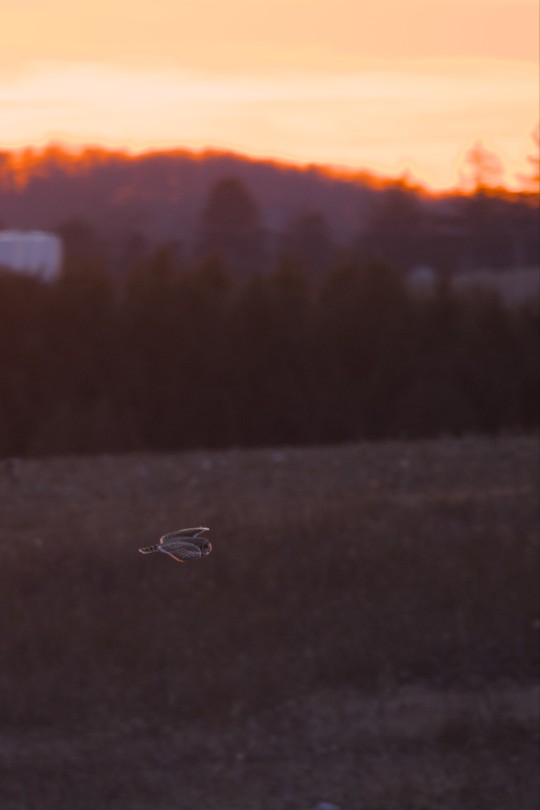
[ID: The Short-eared Owl flies low over the field, with the sunset lighting up their silhouette from behind. They are a small figure in the lower third of the shot, with a background of brown grasses, evergreen trees, and blazing orange sky above. End ID]
#bird photography#birding#photography#bird#birds#birdblr#birdlife#birdwatching#original photography#original photography on tumblr#owl#short eared owl#style influencer#beautiful eyes#can you believe this guy just wakes up looking like that?
32 notes
·
View notes
Text
This one is mine! Can you make the ID?
What's the Bird?
Location: Pima County, Arizona
Date: April 2023
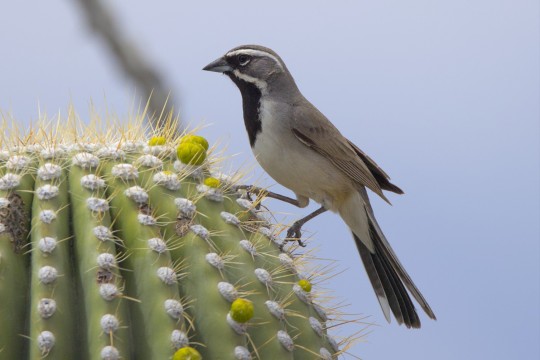
We ask that discussion under questions be limited to how you came to your conclusion, not what your conclusion was.
Happy Birding!
Keep the game alive! Submit a bird HERE
56 notes
·
View notes
Text
You ever see a Pileated Woodpecker on the ground? Me neither, but this guy was about as close as he could get to it.
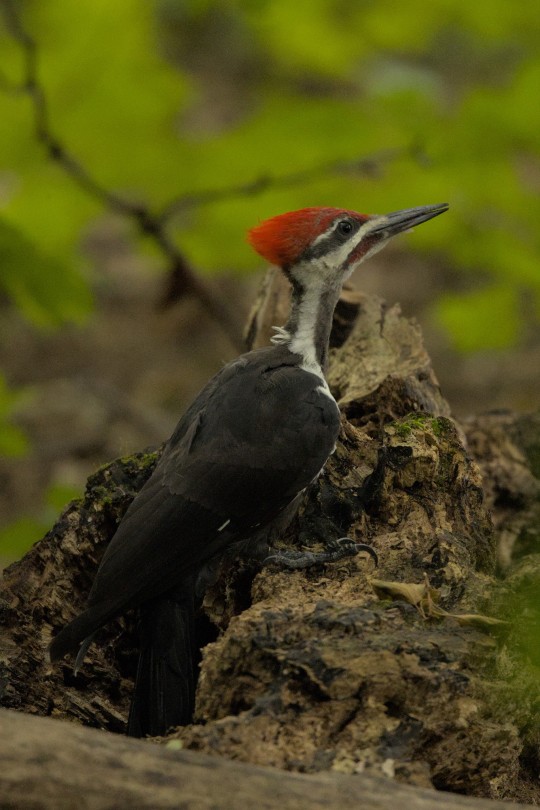
[ID: A Pileated Woodpecker sits on a rotting log. It's the largest species of Woodpecker in Wisconsin, almost as large as a crow. They are over a foot long and have a wingspan of more than two feet. They are almost all black on the body, tail, and wings, with black and white striping lengthwise along the neck and face. Both males and females have a large red crest that sweeps back off the top of the head. Males like this one have a red "mustache" stripe on either side of the mouth, while females have a black stripe there. This one is looking off to the right, allowing for a good view of his pointy beak, almost as long as the rest of his head. End ID]
I was wandering Bill's Woods at the UW Lakeshore Nature Preserve with my family this past August when I spotted this enormous creature. He was digging around in a dead fall about 20 feet from the path, clearly looking for delicious bugs. He was not bothered by my excited whisper of "Pileated!!" to alert my partner and child, and kept at his digging for a minute while I adjusted my camera for the very shady scene.
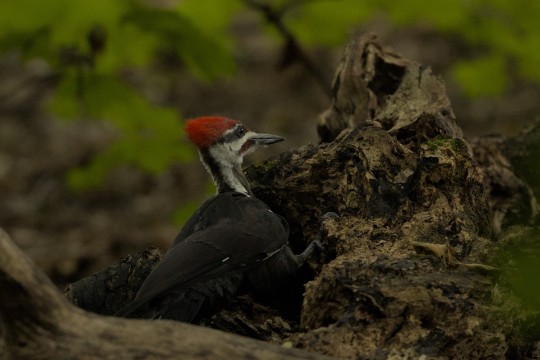
[ID: The Pileated Woodpecker continues to dig around in an open cavity in the dead fall. In this photo he is facing away from the camera and has momentarily lifted his head to look around. End ID]
My kid was not impressed and continued down the path, allowing his mother only a brief look before she too had to move on to keep him in sight. The Pileated then flew to the base of a large tree to pick around a bit more. Finding nothing of interest, he decided to cross the path, flying about 5 feet above my head!
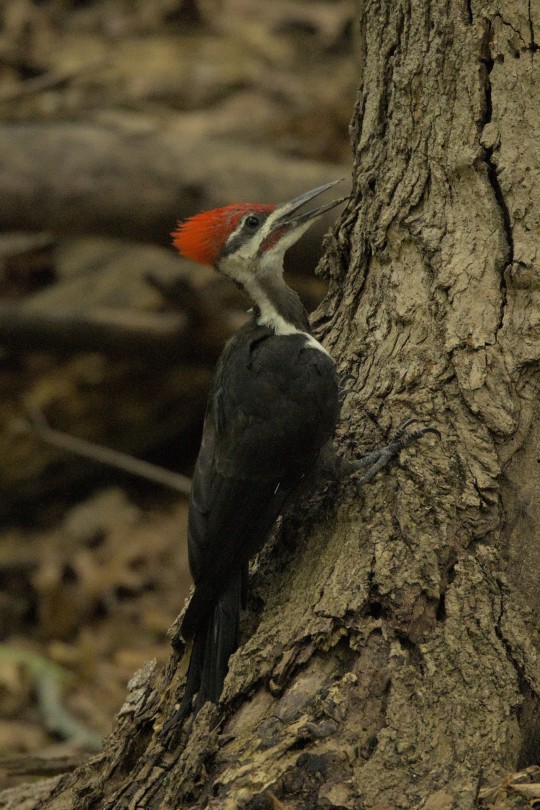
[ID: The Pileated Woodpecker clings to the base of a large tree. This photo offers a better look at his unusual feet, with two toes pointing forward and two pointing backward. This adaptation helps the bird more easily grab onto to the sides of trees and hop from place to place, using his stiff tail as the third "leg"of the tripod. End ID]
I have a funny relationship with these skittish birds. It seems like they almost never want to show themselves, preferring to call and drum from thick woods. But then they pick the oddest times to show up and act as though us humans are just part of the scenery.
#bird#birds#birding#bird photography#photography#birdblr#birdlife#birdwatching#close encounter#original photography#original photography on tumblr#wildlife#woodpecker#pileated woodpecker
49 notes
·
View notes
Text
I picked up a lifer, folks! We were canoeing along the Mississippi River a couple weeks ago, on a camping trip at Merrick State Park. I was keeping a bird list from the back of the canoe, likely doing less than my fair share of paddling, when I saw a shockingly yellow bird on the shore.
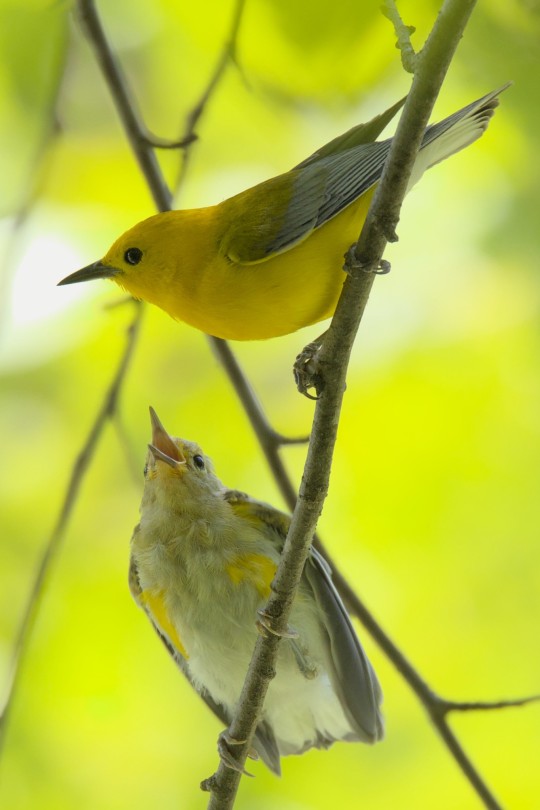
[ID: A pair of Prothonotary Warblers are perched on the same thin branch of a tree. The branch is running vertically across the frame with an adult male clinging to the upper part and a juvenile sitting just below him and looking upward. The male has an incredibly bright yellow head and body. His upper wings and back are green, and his wings change to grey-blue as they extend backward to the primary flight feathers. He has a sharp black beak and a shiny black eye. The juvenile is looking up at the male, mouth open and begging for something to eat. Their body is mostly pale grey, with a few patches of yellow on their throat and sides. They look a bit shaggier compared to the sleek feathers of the adult male. End ID]
I remember exclaiming to my partner, "It's a Warbler! Could that be a Prothonotary?", right before it disappeared into the trees. When she turned around to look, another Warbler appeared in the same spot, but this one was duller yellow. I quietly cursed my lack of a camera (the protection plan explicitly does not cover dropping it into a river), and pulled out my phone to try to pick up any songs. Sure enough, Merlin confirmed the quiet trilling as a Prothonotary! We steered the canoe back around to try for a better look, but they were gone.

[ID: A female Prothonotary Warbler clings to the end of a tiny branch with wispy silk strands on it. She's distinguished from the male by a somewhat duller yellow on her head and back, but otherwise looks very much like her mate. She's collecting what appears to be insect larvae with her bill, which look like tiny grains of white rice. End ID]
Needless to say, I was excited at seeing a new species and lamenting the addition of that same species to my "no pics" list. Later on we were relaxing at the campsite and reading our books when my partner says, "Clay, come here! Is this your bird?! They're chasing each other!" This time I could snatch up my camera before joining her at the edge of the site. And she was right! We had several little Prothonotaries flitting around and peeping at each other. After watching for a few minutes, I realized it was multiple juveniles being fed by their their parents. The kids must have just recently fledged, as they were sitting in very conspicuous places and yelling for food while mom and dad were shuttling tasty bits back and forth.
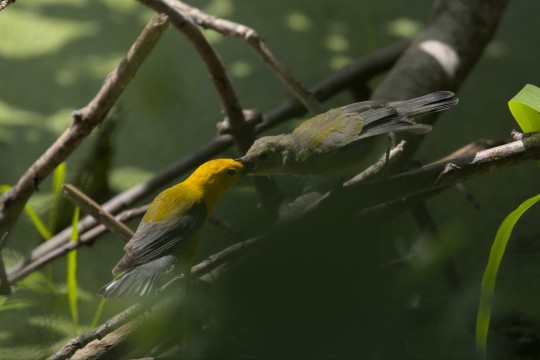
[ID: An adult male Prothonotary Warbler feeds a juvenile. The same male from the first image is perched on a branch in the sunlight, placing something directly into the mouth of his child. From this angle, the color differences between parent and child are very apparent, with the child looking almost entirely grey on their upper parts, aside from a few streaks of dull green along the back. End ID]
I was feeling incredibly fortunate to get a better look at these energetic birds, but it was tough to keep them in the frame. I found that the kids would generally pick a spot out in the open where they could make lots of noise and be sure their parents could find them. If I stayed on a child, I could be sure that a parent would be returning very soon. I also realized that it wasn't just the fledglings peeping frantically for food. Dad was staying mostly silent while foraging down in the understory, but he would give a few quick peeps after finding something to eat. It felt a lot like he was saying, "I found a bug! Where are you? Come and get it!"

[ID: A juvenile Prothonotary Warbler sits on a branch, waiting for their next bit of food. Their bill is open and wings are slightly extended, fluttering in what must be the universal dance for telling your parent that you're hungry. If you are a small bird, that is. End ID]
I must have spent an hour just following these babies down the little access road for driving up to the campsites, taking tons of photos and watching for brief glimpses of a parent. I moved slowly and calmly so as not to disturb them, but they seemed to go about their business as though I wasn't even there. The kids stuck mostly to the edges of the woods, at eye level or higher, but dad was up in the trees, down in the open grass, and just about anywhere you might find a spider or a gnat. He was often flying within a foot or two of me as he crossed the road in tireless pursuit of his goal.
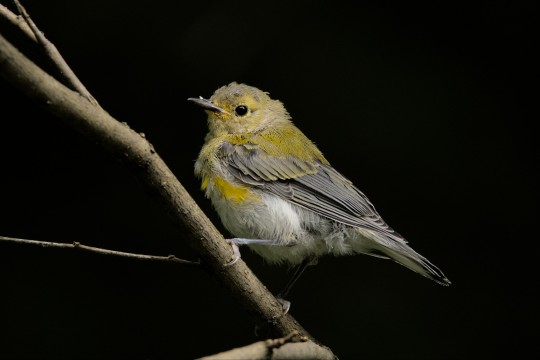
[ID: A juvenile Prothonotary Warbler poses on a branch, patiently waiting for food this time. The bird is well-lit and sitting in front of a very dark patch of forest, which makes the background look almost black. This juvenile has more dull green on their face and flanks where the others were more grey and yellow, but they have the same shaggy appearance of being just recently fledged. End ID]
Thinking back, the experience was almost surreal. I knew I was walking down a paved road in a sold-out campsite, but I was in this little pocket of existence, watching these devoted parents do everything they could to make sure their children would grow up strong and healthy. For this little family, in the few weeks where this river bank has everything they need, the rest of the world might as well not be there.
#bird#birding#birds#bird photography#photography#birdblr#birdlife#birdwatching#close encounter#original photography#original photography on tumblr#feeding#baby birds#warbler#prothonotary warbler#mississippi river#state parks are great even the tiny ones!#lifer#raising kids
15 notes
·
View notes
Text

owls from animal crossing new horizons
-bella
21 notes
·
View notes
Text
I've done a lot of birding the past couple months and not a lot of posting, so I'm going back to our Tucson, AZ trip from April. I hadn't been to the Western US since picking up birding or wildlife photography, so I knew I was going to pick up a ton of lifers. One of our target species for the trip was also my fifth Owl species ever: the Burrowing Owl.
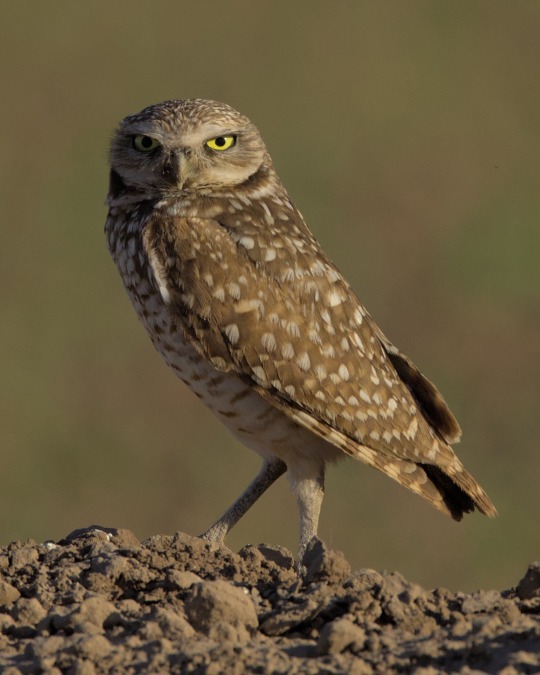
[ID: A Burrowing Owl stands on a mound of dirt. They are facing left and looking toward the camera. The sun is low in the sky off to the right, which illuminates the right side of the Owl's face and their back, while casting the rest in shadow. They have striking yellow eyes and a furrowed brow that gives them the appearance of a permanent scowl. Their oval-shaped head transitions naturally into a slender cylindrical body covered in mottled tan and white feathers. About half the bird's height is body and folded wings, with two naked grey legs planted on the ground. End ID]
This was the morning we had picked for me to do some solo birding, so I drove out to a spot west of Tucson where eBird indicated that Burrowing Owls were likely to appear. It was just after sunrise when I found the road cutting between farm fields where the Owls were reported. I drove slowly down the side of the road in my rented Dodge Charger, stopping occasionally to inspect a suspicious clump of dirt with my binoculars. I had not seen any sign of the Owls when a Land Rover pulled up behind me. A group of three folks in their 60s with binoculars piled out of car, clearly more birders here to do exactly what I was doing.
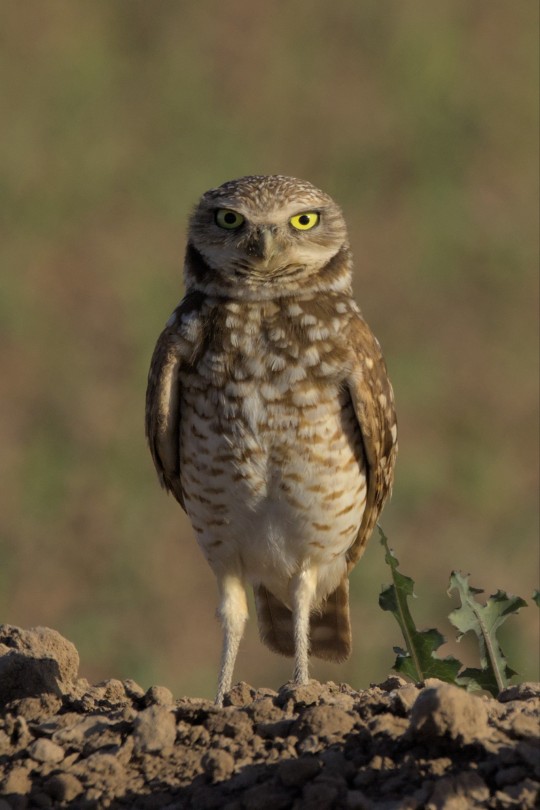
[ID: A Burrowing Owl stands on a mound of dirt, facing the camera. The sun is still low in the sky, but now the bird's face and chest are more brightly lit, showing the transition in feather colors from tan to mottled tan to white as they progress downward from collar to belly.]
They introduced themselves as coming from the UK, and had been visiting Arizona for several weeks in search of all the unique birds the state could offer. The driver was particularly puzzled about the location of the Owls, saying he was "absolutely foxed" that this place with no real habitat could host Burrowing Owls. I showed him the recent sightings on eBird and explained that it was possible the birds just hadn't emerged from their burrows yet.
After another 15 minutes of searching the fields, I offered to lead them to an alternate site nearby. We got in our cars and slowly drove back the way we had come. Just as we were approaching the end of the road, I spotted a small tan creature standing right on the edge of the irrigation ditch along the near side of the field. A Burrowing Owl! I swung the Charger around and flagged down my companions, who had also spotted the Owl.
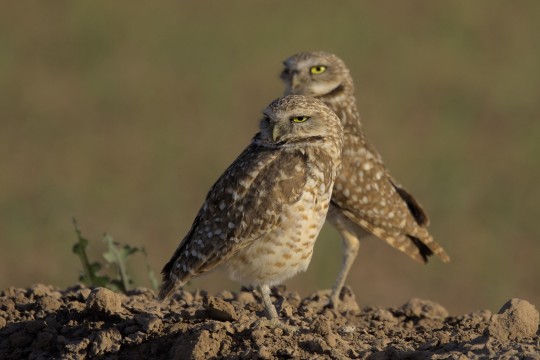
[ID: A pair of Burrowing Owls stand on a mound of dirt. The one in the foreground looks decidedly sleepier and plumper than the one in the background (seen in previous images). Both Owls are similar in coloration, but the one in the foreground has an aluminum leg band for identifying them. End ID]
We got out to take a look and grab some photos from long distance, then slowly crept forward with my Charger as a rolling blind. There turned out to be four Owls spread out along the irrigation ditch, likely close to their burrows which were out of sight. They were surprisingly unbothered by the cars rolling up to them, probably because they see trucks and farm vehicles driving past all day every day. Once we were directly across the irrigation ditch from the closest pair, I climbed into the passenger seat to take some better photosm. Mostly the Owls just stood on their tiny hill and looked around. Though I did witness one of the pair above fly down to pounce on a grasshopper, then return to feed it to their partner.
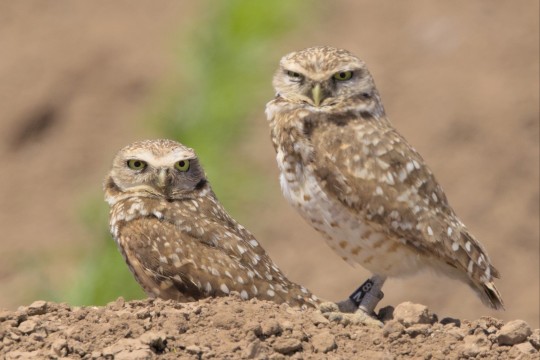
[ID: A pair of Burrowing Owls stand on a mound of dirt. This photo was taken midday, with the sun directly overhead. At least one of these individuals is different from those above, as they have two leg bands instead of one. It's also apparent in the photo that the Owls are standing at the edge of a farm field from the row of green plants out of focus in the background. End ID]
I had such a great view of the Burrowing Owls that I had to bring my family back to see them on our last day in Tucson. Because we were heading out of town in the middle of the day, I was confident we'd find them right away and avoid testing the patience of my kid. It turns out I didn't have to worry. Not only were the Owls right where I left them, but the kid had fallen asleep on the drive, so we had to wake him up to see them! And seeing as I already had the camera within easy reach, I had to take a few more photos.
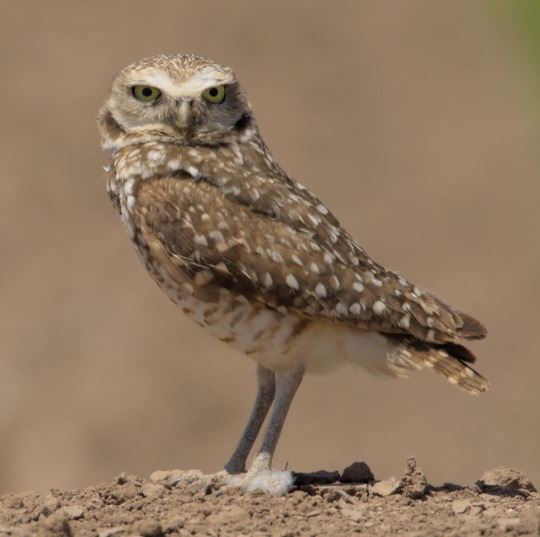
[ID: A Burrowing Owl stands on a mound of dirt. This one is looking alert in the midday sun, standing and scanning the area around the edge of the farm field. End ID]
On a trip full of exciting views, long hikes, and thousands of photos, it was nice to finish the trip quietly sitting in the car just a few yards away from such a compelling bird. And it always feels good to track down a lifer and share that experience with others!
#bird#birding#birds#bird photography#birdblr#birdlife#photography#birdwatching#close encounter#original photography#original photography on tumblr#owl#burrowing owl#arizona#there's simply nothing around here that looks like habitat
452 notes
·
View notes
Text
I've been spending a good deal of time outside, what with spring migration going on in Wisconsin. Some of this is simply sitting in my back yard and staring up at the trees, watching for bird shapes. But we also carved out a weekend to attend the Horicon Marsh Bird Festival. I really ought to do a longer post on the great things we saw there, but this one is about Barn Swallows.
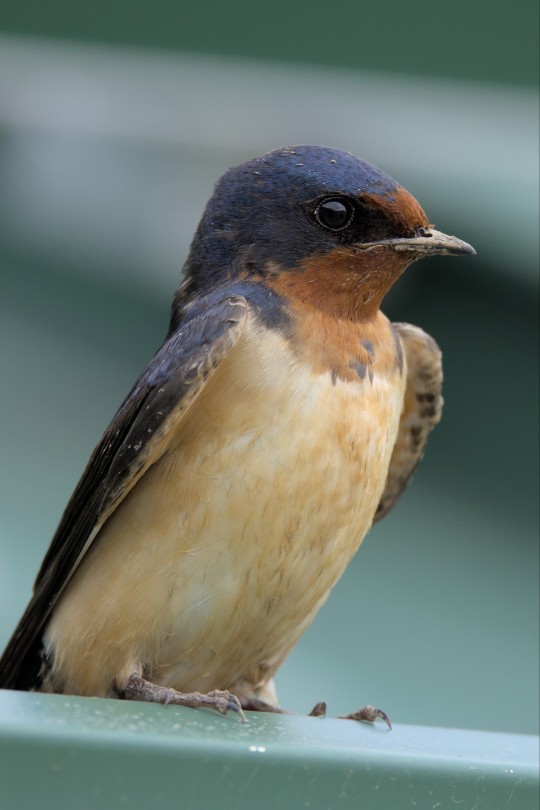
[ID: A Barn Swallow sits on the edge of a steel roof. They have a dark blue head and wings, buffy yellow underparts, and orange on the face, throat, and a narrow fringe along the top of the breast. The Swallow is looking off to the right with one large dark eye showing. They have a little mud caked on their bill, with more flecks on their chin and head. End ID]
This individual is one of many that have recently arrived at Horicon Marsh and were building nests around the visitor's center. They build their nests by scooping up small bits of mud in their beaks and sticking it to a wall, the underside of a dock, and yes, even a barn. You can tell these two have been working on their nests because of the messes on their faces.
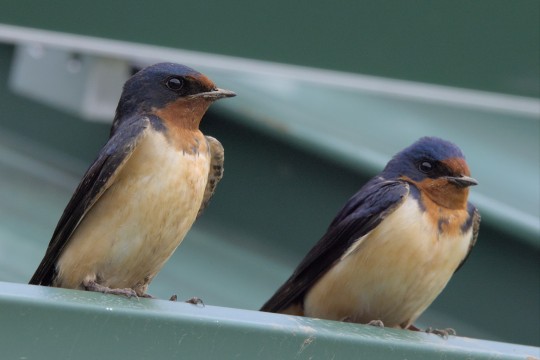
[ID: Two Barn Swallows rest on the edge of a steel roof. They are spaced just a few inches apart, both looking off to the right. End ID]
I wanted to share this series for a couple reasons. First, I was terribly charmed by the sight of a couple Swallows sitting just a few feet from the main entrance of the Visitor's Center, with no concern for the people walking in and out of the building right past them. They probably flew thousands of miles to get to this spot, and now they're spending all day flying literal teaspoons of mud back and forth to build a temporary home for their kids. Second, I knew I could get some really nice portraits with such a close encounter.
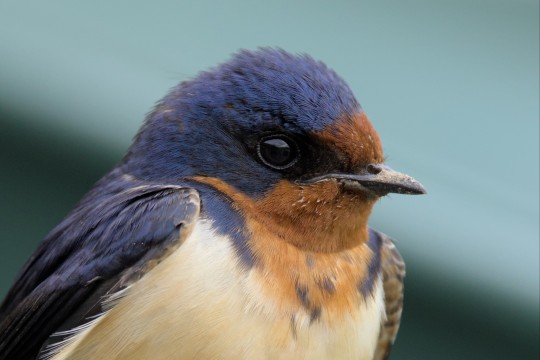
[ID: A portrait of a Barn Swallow, one of the same two pictured above. At this close distance, it's possible to pick out the individual feathers on the Swallow's face, specks of mud on their bill, and the reflection of the clouds and the horizon in their eye. End ID]
I'm sure they're tired from all the hard work. They seemed completely unbothered by us standing so close, but also not terribly interested in the traffic on the sidewalk.
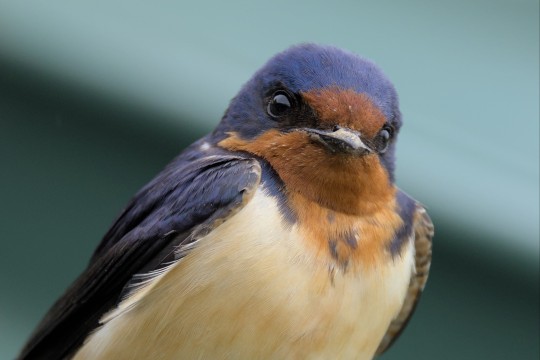
[ID: A Barn Swallow looks over at the camera. Their bill turns down slightly at the corners, making for the appears of a small frown. End ID]
This one did glance in my direction long enough to capture an expression that reads to me like mild disinterest. But then they went right back to staring out at the parking lot, not really making any noise or even appearing to communicate with one another. I'd like to think they enjoy sharing a moment of quiet contemplation with a friend.
#birding#bird photography#bird#birds#birdblr#birdlife#birdwatching#photography#close encounter#original photography#swallow#barn swallow#rest#bird friends#if you look very close you can just make out my reflection in their eyes
101 notes
·
View notes
Text
I saw one of these at Sweetwater Wetlands a couple weeks ago! I'm so excited to have an ID, as I barely know anything about lizards!
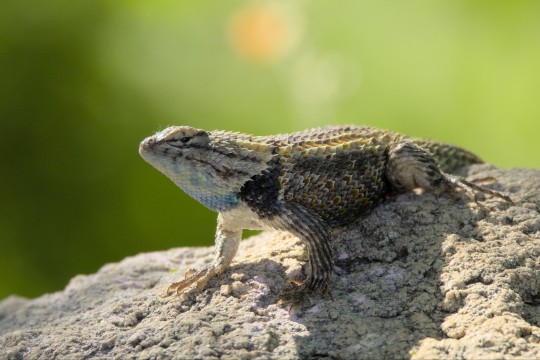
[ID: A Stout Desert Spiny Lizard sits on a grey rock, apparently doing a territorial display which looks like it is doing a push up. It is a mostly white and grey spiny lizard with a black shoulder patch, blue throat scales, and various scales with red, orange, and yellow edges along its flanks and back. End ID]
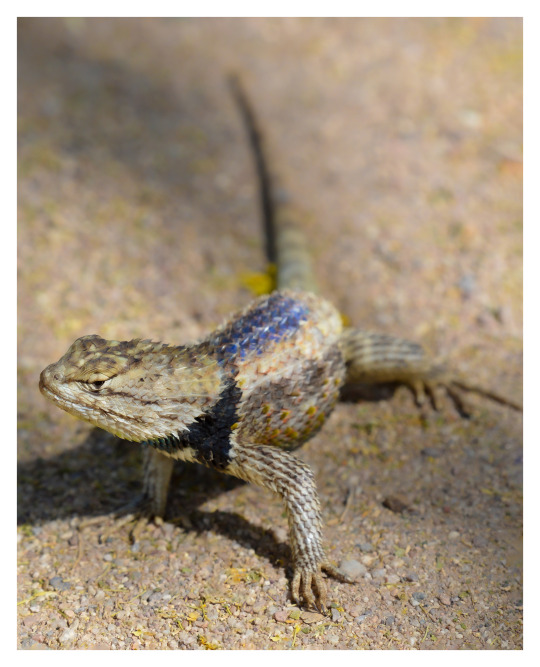
The bodybuilder.
A stout desert spiny lizard (Sceloporus magister) performing his push up territorial display. At Tohono Chul, Tucson, Arizona.
149 notes
·
View notes
Text
Folks, I picked up a lifer just down the street from my house! It was raining a bit on Sunday, so we decided to dig our raincoats out of storage and go hunt for some puddles in need of splashing. Now, I've learned my lesson over the past couple years: never leave home without the binoculars or the camera. And this time I was very glad I grabbed the bins before heading out.
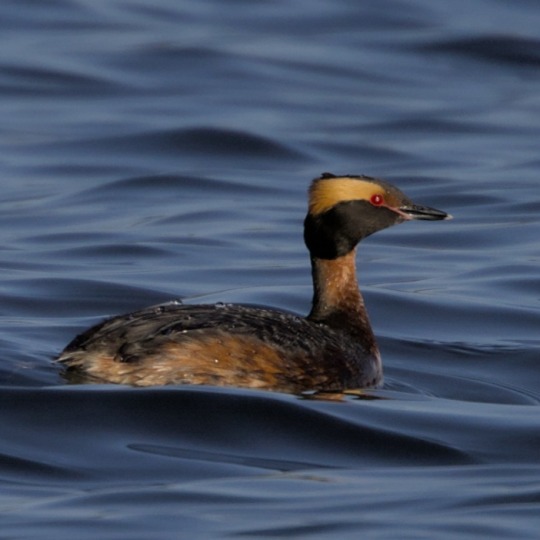
[ID: A Horned Grebe floats on the blue water of Lake Monona. They are facing to the right, showing an impressive profile in the evening sunlight. The Grebe is a small ducklike creature, mostly black with smudges of brown on the flanks and throat. Their head is their most striking feature, black with piercing red eyes. Above and behind each eye a tan stripe radiates backward to create a small crest, the eponymous horns. A thin line of pink skin traces forward from the eye to join with the black dagger of a bill tipped with white. Small beads of water sit on the Grebe's back from their most recent dive below the surface. End ID]
But wait, wasn't it raining at the beginning of this story? It was! We wandered through the neighborhood for a while, mom and kid forging ahead while I lagged behind counting Sparrows and Finches. We made our way down to a park at the edge of Lake Monona. Of course, I had to go out on the dock to check the water for anything interesting. Sure enough, there were a pair of small birds bobbing with the waves, diving down to hunt, and popping back up again. I said to myself, "are those Grebes?" just before I noticed a flash of tan on their heads. Folks, I knew I had never seen a Grebe with tan on it before! I called Caitlin over, handed her the binoculars, and dashed home to grab my camera.
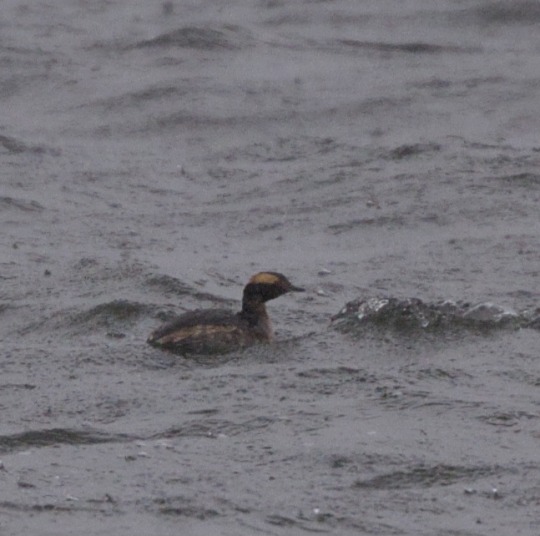
[ID: A Horned Grebe floats on the choppy grey water of Lake Monona. The bird appears to be drenched, but unbothered by the rain. In the low light it's just possible to make out the tan horn on their head and the brownish flank against the black body. End ID]
The above photo is a much more accurate representation of my view from Sunday. The rain began to pick up as I was returning with my camera, but I ignored the poor conditions and set up to shoot anyway. I needed to be sure of the species for my life list! So I got cozy on the downwind side of a nearby tree and started scanning the water for small black birds popping up. I did eventually relocate them, fairly far out on the lake. I was also surprised to see a Common Loon cruise by at a much closer distance.
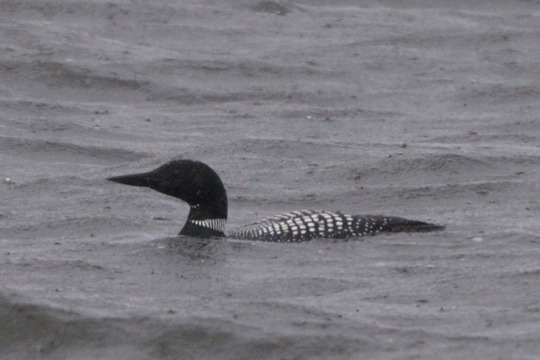
[A Common Loon floats in profile, partially submerged, on the grey water of Lake Monona. The Loon is almost entirely black, with the white checked back and tapered white neck band characteristic of their breeding plumage. Their gently curved head and knifelike bill are jet black. End ID]
Certainly not the best pictures I've taken, but they were good enough to make a positive ID. For the time being, I would have to be content with this documentation. A couple days later, however, the clouds had passed through and we had just enough time for a walk before dinner. And it was golden hour! Perhaps the Grebes were still around?
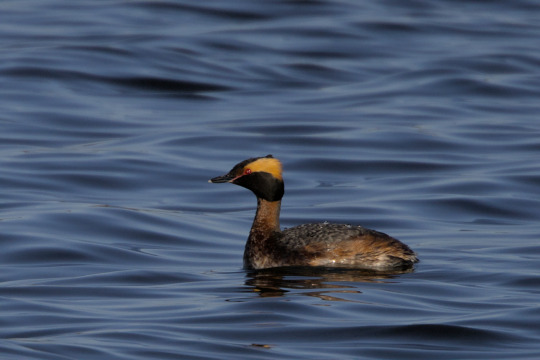
[ID: A Horned Grebe floats on the blue water of Lake Monona. The lake is much calmer and the sunlight is reflecting off the wet feathers of the Grebe. End ID]
Not only was the Horned Grebe back at the same dock, it was much closer this time and very cooperative, turning back and forth to make sure I could see their best angles. I sat right down at the end of the dock and snapped away while my kid went looking for sticks to bash on the rocks at the shoreline. It was very peaceful sitting out by the lake, listening to the birdsong, the fitness class at the top of the hill, the captain of the rowing team calling out their orders, my son making up games about climbing the rocks and telling me all the arcane rules he just uncovered. Even the Loon came back around for another cruise.
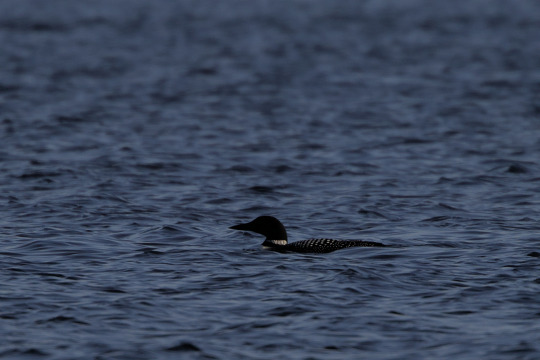
[ID: A Common Loon floats out in the distance on the blue water of Lake Monona. End ID]
#birding#bird#birds#bird photography#photography#birdblr#birdlife#birdwatching#original photography#original photography on tumblr#grebe#horned grebe#loon#common loon#you know i think i really like it here
24 notes
·
View notes
Note
Not really a question, but I just wanted to say that your photos are awesome! You have a lot of talent, and I’m looking forward to seeing more of it in the future :)
That's really kind of you to say! You can be sure that I won't be quitting photography anytime soon.
5 notes
·
View notes
Text
Now that spring is here, we're starting to see some changes in the local bird population. New faces are starting show up, and even the year-round species are out singing and generally being visible. There's territory to claim and potential mates to attract, after all. But while many species are just arriving or passing through, one that's dear to me is just about ready to depart.

[ID: A male Dark-eyed Junco stands in the newly-revealed grass and dead leaves. Juncos are small birds, about the size of a sparrow. This one is the slate-colored variety, with a dark grey head and upper body, contrasting with bright white underparts. He's facing the camera and looking slightly to the left. His eye is dark brown, nearly black, and his triangular bill is pale pink. End ID]
The Dark-eyed Juncos are strictly winter residents of southern Wisconsin, preferring to nest in Canada, the Northeast US, and parts of Appalachia. This past weekend, I could tell they had migration on their minds.

[ID: Another male Dark-eyed Junco, standing among dead twigs and sunflower seed shells. This one is darker grey in the head and breast, with lighter grey on the wings and a bit of rust color on the back. End ID]
For most of winter it's fairly common to see a solitary Junco or pairs or small groups picking through the snow under the birdfeeders in our backyard. But now they're forming a flock of at least 30 birds, foraging together and singing their loose trilling song. It's as if they know they have a long flight ahead, and every moment of daylight must be spent filling the tank and gathering their compatriots.

[ID: A male Dark-eyed Junco forages in the twigs and leaves for scattered birdseed. Juncos scrape at the ground with both feet simultaneously in a little hop, then inspect the freshly-exposed ground for tasty morsels. This one is mid-scrape, with debris flying around it. End ID]
So I decided to sit on the deck with my camera for a while to bid the Juncos farewell until next winter. I've been scattering seed back there every so often, and the other birds aren't exactly neat or careful when digging through the feeder above. As such, the Juncos have lots to choose from while poking around between the squirrels and the Mourning Doves. Once I sat down, they didn't seem to mind me at all.

[ID: A female Dark-eyed Junco inspects the ground for bits of seed. The females are distinguished from the males by their paler grey upper parts, sometimes with more brown and tan shades mixed with the grey. End ID]
Though, the birds did seem to mind when my kid joined me on the deck, brandishing his bright green snow shovel. They scattered to the trees or the fence and stayed there until I convinced him to put the shovel away in favor of coating the deck boards in a thick layer of sidewalk chalk.

[ID: A female Dark-eyed Junco sits on a wooden fence, waiting patiently for the danger posed by a nearby four-year-old to pass. The wind is catching the white feathers on her left hip and flipping them up like the flounce of a skirt. End ID]
As the sun sank lower in the sky, I figured I better get dinner started. I spent another minute or two listening to the evening birdsong before capping my lens and helping to knock the chalk dust off my kid's coat and pants. This sudden activity caused the Juncos to scatter once again. Have a safe trip little ones. I'll see you when the snow flies.

[ID: A female Dark-eyed Junco stands in the dirt, looking at the camera with head cocked to one side, as though she's wondering what this person finds so interesting about her. End ID]
#bird#birding#birds#photography#bird photography#close encounter#birdblr#birdlife#birdwatching#original photography#original photography on tumblr#dark eyed junco#migration#spring
588 notes
·
View notes
Photo

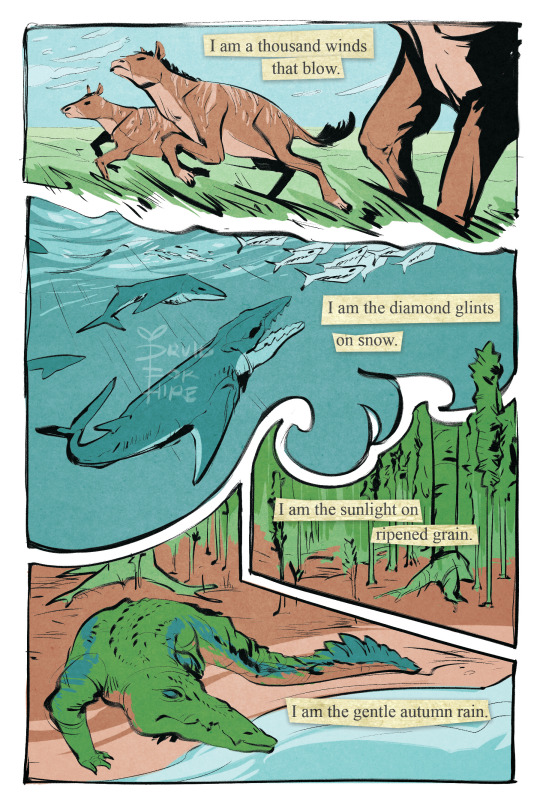
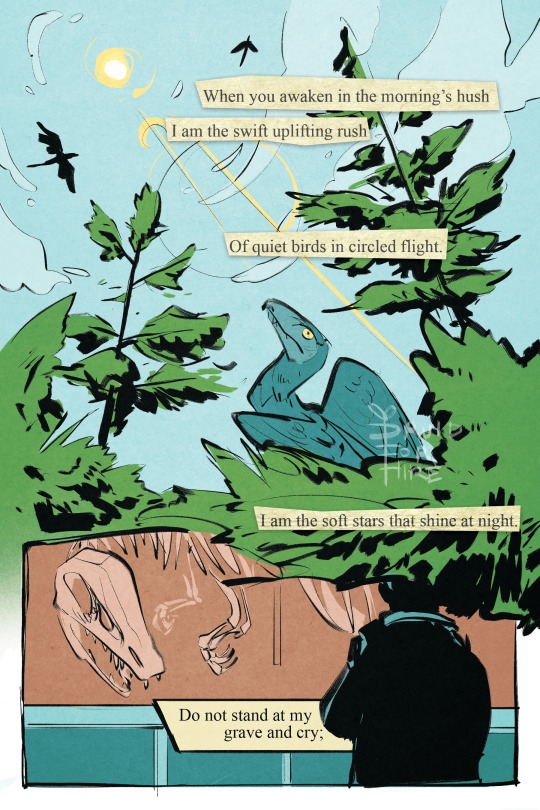

[image id: a four-page comic. it is titled “do not stand at my grave and weep” after the poem by mary elizabeth frye. the first page shows paleontologists digging up fossils at a dig. it reads, “do not stand at my grave and weep. i am not there. i do not sleep.” page two features several prehistoric creatures living in the wild. not featured but notable, each have modern descendants: horses, cetaceans, horsetail plants, and crocodilians. it reads, “i am a thousand winds that blow. i am the diamond glints on snow. i am the sunlight on ripened grain. i am the gentle autumn rain.” the third page shows archaeopteryx in the treetops and the skies, then a modern museum-goer reading the placard on a fossil display. it reads, “when you awaken in the morning’s hush, i am the swift uplifting rush, of quiet birds in circled flight. i am the soft stars that shine at night. do not stand at my grave and cry.” the fourth page shows a chicken in a field. it reads, “i am not there. i did not die” / end id]
a comic i made in about 15 hours for my school’s comic anthology. the theme was “evolution”
154K notes
·
View notes
Text
I went looking for spring ducks the other day. The boardwalk between Upper Mud Lake and Lake Waubesa in Madison is usually a great place to see all the weird waterfowl that migrate through in March. And they were there! The trouble this year is we had such a warm February that almost all the ice was already gone from the lakes. So pretty much everyone except the Mallards were way out in the middle of the water. And this goof:
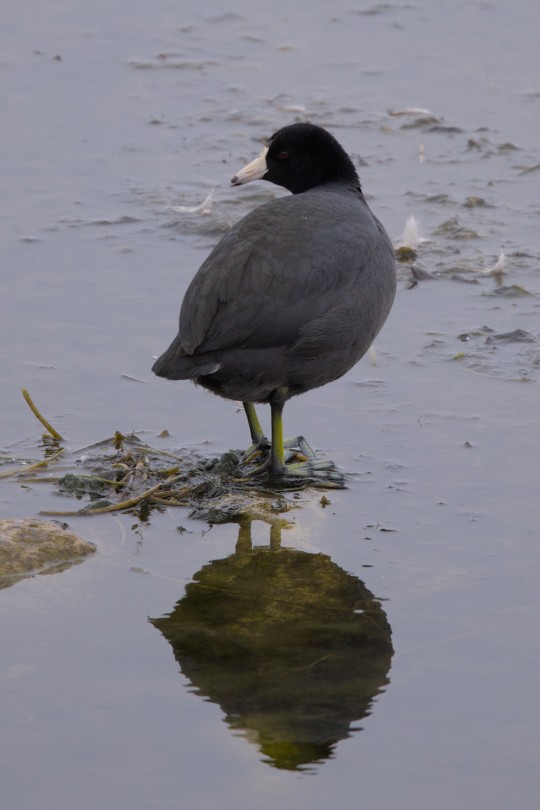
[ID: An American Coot stands on a small patch of vegetation at the edge of a lake. They're turned away from the camera, but looking back over their shoulder. The Coot has a slate grey body about the size and shape of a football, and black head with a bone white bill and a dark red eye. Their lobed feet are a pale yellowish green, great for walking on top of loose marsh vegetation and mud. End ID]
I'm quite fond of American Coots. Silly name aside, they have an awkward profile, beady little eyes, and beautifully weird feet. We only see them here during spring and fall migration, so it's a little treat to have flocks of them passing through. And this one in particular didn't seem to mind us watching them pick along the shore from the boardwalk. Just a sassy little glance over their shoulder before going back to their foraging.
#bird#birds#birding#bird photography#photography#close encounter#birdblr#birdlife#birdwatching#original photography#original photography on tumblr#coot#american coot#weird feet
4 notes
·
View notes
